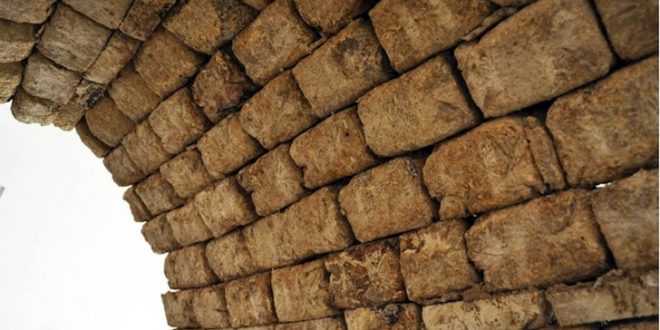Although found chiefly outdoors, molds can also be present indoors. They can enter your home through the open windows, doorways, and vents. It can also get attached to people’s clothes, shoes, and even your pests.
Whenever there is excess moisture, it becomes a suitable environment for molds to grow. Such situations as floods or a simple water leak on your walls may contribute to mold growth.
Ever wonder how molds affect people’s health?
According to the Centers for Disease Control and Prevention (CDC), the most common indoor molds are Cladosporium, Penicillium, and Aspergillus. And when people get exposed to these, it may cause different symptoms ranging from wheezing, stuffy nose, and itchy eyes and skin. Those who have allergies to molds or people who suffer from asthma may experience a more severe reaction such as fever or shortness of breath.
So if you have molds growing in your home due to water damage, we have rounded five sustainable ways to get rid of them.
1. Baking soda
Baking soda, also known as sodium bicarbonate, is widely used mainly for cooking or baking as a fermenting agent. Aside from being a catalyst in the kitchen, baking soda also has many other domestic uses at home. Some use it as an odor neutralizer, while others for pest control.
But did you know you can also use baking soda to deal with moldy growth?
Dissolve a one-quarter tablespoon of baking soda into a spray bottle filled with water. Shake it to mix, and then spray on those moldy surfaces. One of the properties of sodium bicarbonate is that it can absorb water, making it specifically helpful for preventing molds from growing.
On the other hand, sodium bicarbonate also exposes mold to an alkaline environment (high pH) instead of the mold’s preferred acidic environment (low pH), making it difficult for these fungi to dwell.
2. Lemon
The use of lemon is somehow synonymous with how vinegar works. The main difference is the aromatic smell the lemon leaves behind.
However, lemon juice treatment should begin with a simple soap and water combination. Start the scrubbing process to soften the mold residues. And then, treat the scrubbed area with either freshly cut lemons or freshly squeezed lemon juice extracts.
You may have to repeat this process until you get satisfied with the results. Another thing to note is that using lemon may only tackle mold growth on top of the surface. The longer the mold development stays on a surface, the harder it is to remove.
No matter how you would want to DIY your mold growth problems, there are certain instances when you already have to call an expert to deal with it. Fast Affordable Restoration (FAR) company offers affordable mold removal services that lift off your baggage. Before you feel overwhelmed about what to do, check out the available options first, there is for you.
3. Vinegar

Vinegar is one of the most accessible items to find at home. All households have it, and it is the cheapest to get as well when it comes to some sustainable household remedies.
Known for its antifungal and antibacterial properties, the acetic acid in vinegar is a moderately strong acid that can disrupt the growth of a wide range of fungi and other microorganisms.
Both strategies work whether you dilute the vinegar or use it as it stands. First, transfer it to a spray bottle and spatter on the affected area. Then, give it some minutes before wiping the area off with either a disposable towel or a microfiber cloth. Another option is to scrub the space to get into the deeper layer and then wipe the surface one more time.
You can tame the vinegar smell by adding some drops of your favorite essential oil.
4. Tea Tree Essential Oil
You might be thinking of getting rid of spiders or other insects, for that matter, when you hear tea tree oil. But, tea tree oil does more than that. It can also be used as another safe option to get rid of molds.
Start the mixture by combining one teaspoon of tea tree oil with 1 cup of water, and you may increase the quantity ratio from there. Properly agitate the mix, then pour it into a spray bottle for maximum coverage. Leave it dry for an hour once applied to the moldy area, then use a microfiber cloth to wipe the surface away.
Now, be mindful of those synthetic essential oils you find commercially. To ensure effectiveness, check the list of ingredients found on the bottle label, and it should include Melaleuca alternifolia.
Tea tree essential oil is known to be a natural fungicide and therefore has the strength to prevent mold spores from coming back.
5. Hydrogen peroxide
Mold is relatively easy to get rid of on smooth areas such as tiles. But, it gets complicated when found on other surfaces such as wood, carpets, or even drywall.
If you have mold growth on your porous items or surfaces, hydrogen peroxide can help you. It can reach further than bleach and, at the same time, does not give off toxic fumes that you and your family might inhale.
Use a three percent concentration of hydrogen peroxide and spray it directly on the affected area. You will notice bubbles, as hydrogen peroxide produces bubbles once it gets in contact with microorganisms. After allowing it to sit for 10-15 minutes, you can easily wipe the surface off with a clean damp cloth.
Aside from being readily available, Hydrogen peroxide is also the most versatile remedy among all the ones included in this list because you may use it on porous and non-porous materials.
Final Thoughts
Mold growth is inevitable no matter how careful you are not to enable it to develop at home. Therefore, the best thing to do is face it head-on. The longer you ignore it, the harder it gets to tackle it.
Once handled, you may start with your preventive measures next to avoid the same thing from happening again next time.



